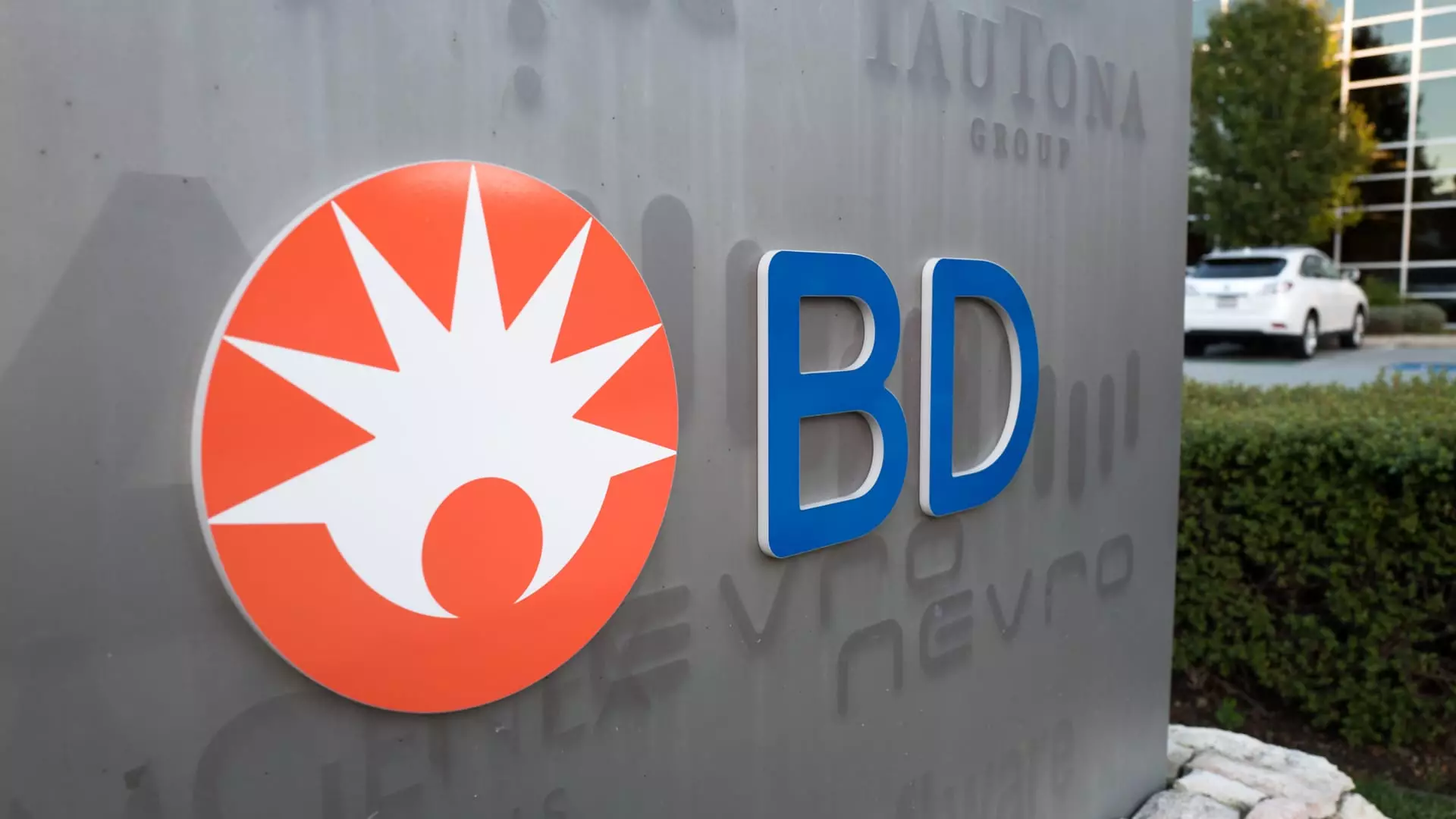Becton Dickinson (BD) stands as a pivotal player in the medical technology landscape, dedicated to the development, manufacturing, and distribution of an extensive range of medical supplies and devices. Serving healthcare institutions, life science researchers, and clinical laboratories globally, BD has solidified its stature with a market capitalization hovering around $66.65 billion, translating to approximately $229.85 per share. The company operates primarily through two distinct segments: MedTech and Life Sciences. Each division plays a critical role in BD’s financial ecosystem while simultaneously representing divergent growth trajectories and valuation benchmarks.
BD’s MedTech segment is burgeoning, boasting a revenue of $15.1 billion and an EBITDA of $6.7 billion, fueled by the rising demand for medication delivery systems and advanced monitoring technologies. The rapid growth of GLP-1 medication has uniquely positioned MedTech as a leader in infusion pumps and prefilled syringes. This segment exhibits growth rates in the mid-single digits, benefiting from improved healthcare delivery mechanisms.
Conversely, BD’s Life Sciences segment, which contributes $5.2 billion in revenue and $2.0 billion in EBITDA, is entrenched in a low-single-digit growth pattern. While Life Sciences products offer stability due to their reduced exposure to cyclicality and reimbursement pressures, it pales in comparison to the dynamic growth and higher market valuations seen within the MedTech division. The stark differences in performance metrics indicate that the two businesses exist in fundamentally different phases of their respective life cycles.
Starboard Value, a seasoned activist investor, recently announced its position in Becton Dickinson, advocating for the separation of the Life Sciences division. Starboard’s encouraging track record—achieving impressive returns in past campaigns—has prompted a reassessment of BD’s corporate structure. With a substantial history of enhancing operational efficiency across numerous healthcare companies, Starboard’s involvement raises questions about BD’s current strategy and its capacity for optimization.
By pursuing the removal of the Life Sciences segment, Starboard proposes a clear separation of business units that can capitalize on their inherent strengths rather than being tethered to a conglomerate structure. The catalyst for this suggestion stems from an evident misalignment in growth rates and valuation metrics. MedTech, characterized by higher growth prospects and a valuation multiple between 13 to 14 times, retains broader appeal compared to the more stable but slower-growing Life Sciences unit, which garners a valuation of upwards of 20 times.
If Becton Dickinson were to follow Starboard’s recommendations and proceed with a divestiture of the Life Sciences division, it is projected that the MedTech business could achieve an EBITDA valuation of approximately $110 billion or more. This projection is particularly enticing given the current trading multiple of 16.8 times EBITDA across the entire company, which unduly reflects the lesser-valued Life Sciences component. The future potential unlocked by separating these divisions raises broader discussions about shareholder value.
Unlocking the value through strategic separation not only allows MedTech to attract an investor base interested in high-growth opportunities but also enhances management focus. Each division could subsequently employ resources adeptly aligned with their specific operational challenges, leading to improved margins and greater overall efficiencies.
Additionally, while reports suggest that Life Sciences could have a valuation of around $30 billion, some segments might remain integrated with MedTech for synergistic benefits. However, it’s clear that the long-term health and operational focus of both businesses could be more effectively managed if they operated independently.
While Starboard’s activist influence on Becton Dickinson is noteworthy, it appears that BD’s management is already considering the strategic benefits of segment separation. This alignment suggests that Starboard’s pressures find resonance within BD’s leadership, potentially leading to a less contentious, collaborative evolution. Starboard’s activism does not revolve around confrontation but rather constructive engagement, aiming to catalyze growth through strategic realignment.
As Becton Dickinson contemplates its future, the potential separation of its Life Sciences unit could not only enhance shareholder value but also allow both divisions to mature on their terms. In a market that increasingly favors specialized medical technology companies, the right course of action could determine BD’s trajectory in the healthcare landscape. Embracing this opportunity for strategic separation might ultimately herald an era of renewed focus and unparalleled growth for both MedTech and Life Sciences at Becton Dickinson.

